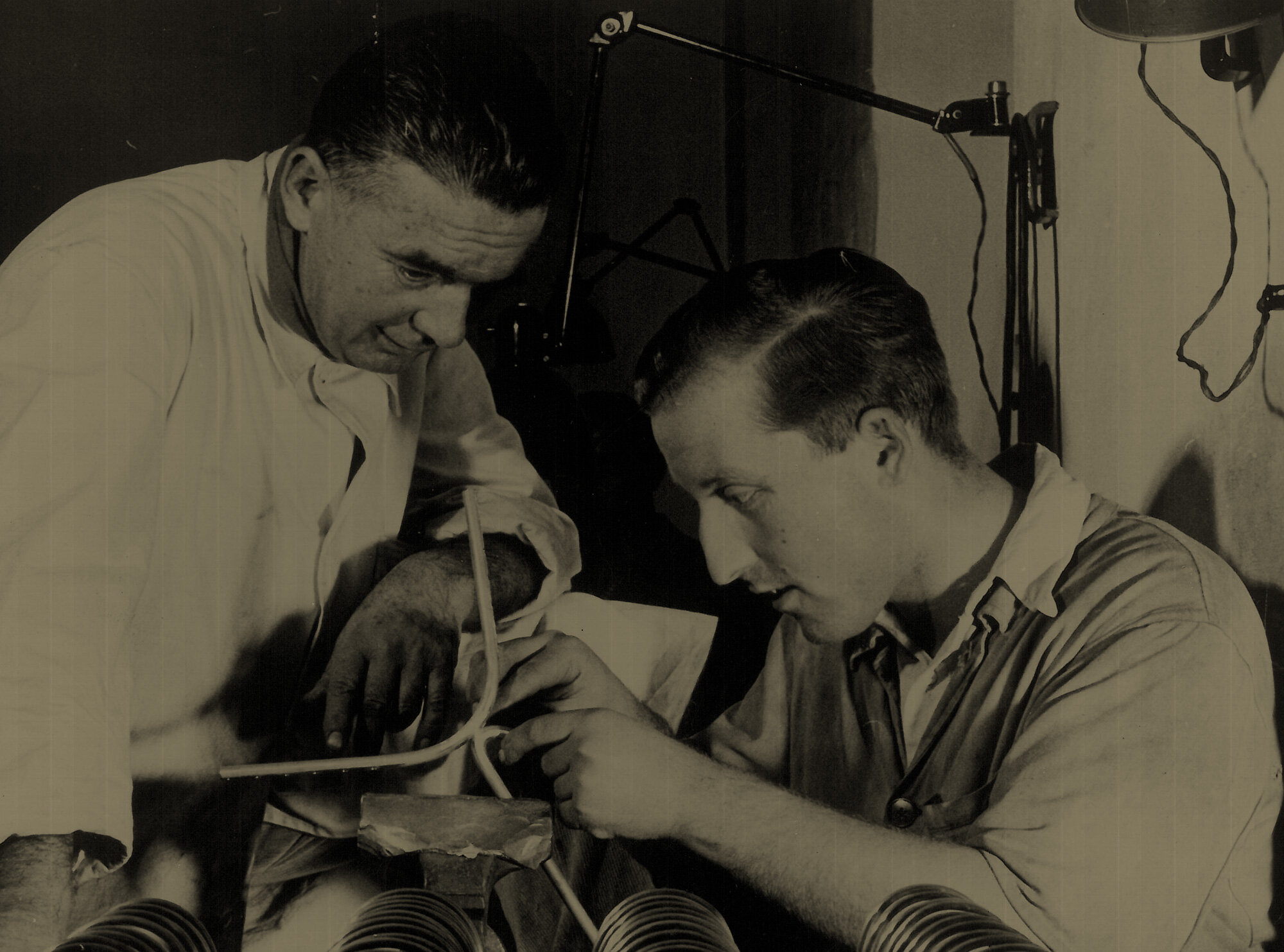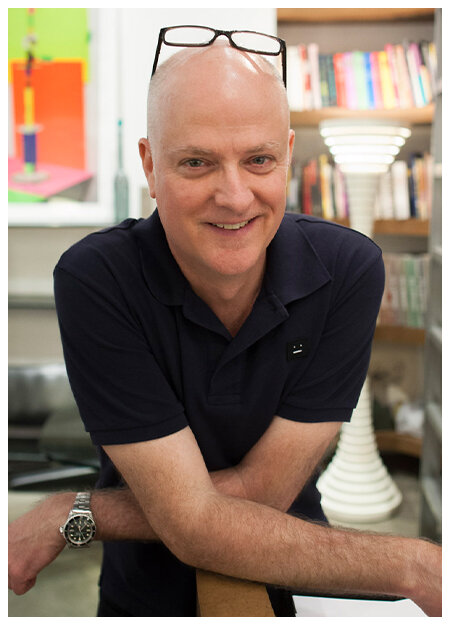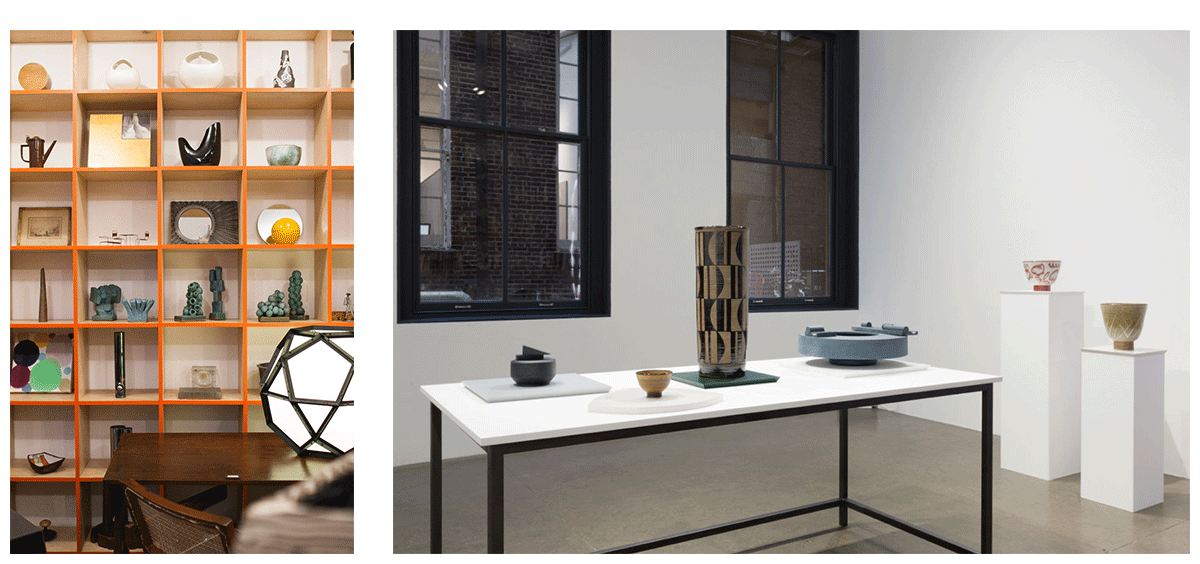241
241
Austria, c. 1955
brass 5½ h × 19 w × 4¼ d in (14 × 48 × 11 cm)
brass 5½ h × 19 w × 4¼ d in (14 × 48 × 11 cm)
estimate: $700–900
result: $813
follow artist
provenance: Collection of Patrick Parrish
I began collecting Auböck over twenty years ago, and my collection has grown from a single brass egg to over five hundred pieces at one point. After decades of being forgotten, Carl Auböck II is now back in the forefront of the historical design discussion. Posthumously he is once again receiving the same amount of critical attention he received while he was alive, when the Workshop won four Compasso d’Oro awards at the Triennale di Milano in 1951, 1954 and 1957.
The Auböck Werkstätte designed over 4,500 unique designs throughout its lifespan, during which Carl’s son Carl Auböck III, was also an active contributor. For a father and son to have designed so many unique designs is unheard of, and is an amazing feat in its own right.



For generations articles of daily use have been created behind the entrance to the lovely old house, Bernardgasse 23, in Vienna.
Essential for the creative process of these remarkable specimens is a strong feeling for genuine quality, love of form and material, as well as a deep interest in people and an imaginative transfomation of their wishes into a variety of functional objects.
The circle of customers for these Viennese products is truly international. In accordance with the nature of these quality goods, Carl Auböck models are to be found at the most important specialist fairs and high class stores of the world’s capitals. They are as much at home in New York and London as in Paris or Tokyo.
It is not for nothing that the attraction and magic of handmade finished articles coming from Vienna’s Bernardgasse 23 continuously meet with recognition throughout the world.
Steady, vigorous development guarantees that Carl Auböck goods will in the future continue to be in the front line of progress in contemporary design and decorative art.
Excerpt from Carl Auböck Vienna, catalog, 1972
Hinter dem Eingangstor des schönen alten Hauses der Bernardgasse 23 in Wien entstehen seit Generationen Dinge für das tägliche Leben in unserer Zeit.
Für den Entstehungsvorgang dieser bemerkenswerten Modelle ist ein starkes Gefühl für echte Qualität, Liebe für Form und Material, ein tiefes Interesse für Menschen und ein phantasievolles Umsetzen von Wünschen in eine Vielfalt von gebrauchstüchtigen Gegenständen massgebend.
Der Kundenkreis dieser Wiener Erzeugung ist ein wahrhaft internationaler, der Natur der Qualitätserzeugnisse entsprechend finden sich modelle von Carl Auböck auf den bedeutensten Fachmessen und in den Spitzengeschäften der Metropolen dieser Welt. Sie sind in New York und London ebenso wie in Paris oder Tokio zu finden.
Der Reiz und Zauber handgefertigter Gegenstände aus der Wiener Bernardgasse finden nicht umsonst immer wieder Anerkennung und lebhaftes Interesse in aller Welt.
Eine ständige und lebendige Weiterentwicklung bietet die Gewähr dafür, dass die Modelle von Carl Auböck sich heute und in der Zukunft in vorderster Linie mit den Entwicklungen im Design und der bildenden Kunst unserer Zeit befinden.
Auszug aus Carl Auböck Wien, Katalog 1972



Our paths first crossed, unknown until many years later, at an intimate yet bustling wedding reception in a south Chicago apartment. This was probably 30 years ago, perhaps even the same year a new gallery, Torno Wright, opened at the end of my street to a fanfare of Eames, heralding new changes to come. Criss-crossing breezes of chance encounters, meandering spirits, hazy focus of time and space, of enthusiasm and knowledge sought, now united again in the same city.
That same serendipity, prompting impulse and discovery, guided welcome reward in the crucible of that great industrial city, still littered with the artefacts of the American mid-century. It was within this uneven yet fertile terrain, hidden slightly below surface, that Patrick’s intuitive talent—honed first as photographer then embellished as artist—would treasure the valuable neglected as passionate collector, and then as the inspirational dealer that I was to meet again, years later in New York City.

If asked to select one word to describe Patrick, I would resist and pick two. The first would be curiosity—a fundamental essential, to stimulate inquiry and rigour in all things, both great and small, of any era or region, type or surface. Even the most fleeting survey of this selection for sale is a celebration of innovation and of inspiration—an unerring eye for the unusually exceptional, or perhaps the exceptionally unusual. The chances are, that these are indeed discoveries that you have not yet realized that you needed to make.
Mentor, would be my second word. If artefacts and objects articulate visual, cultural and historic language, then the fluency of skillful mentorship—to guide, nurture, describe and explain—releases the eloquence of murmuring histories. In this capacity Patrick is that most earnest and sincere of excellent narrators. If ever I had friends, clients or colleagues visiting New York looking for unusual inspiration, there was always the certainty that Patrick’s gallery would offer them a glimpse of the hitherto unseen or the unusually seductive, always with the reassurance of the most fascinating story waiting to be told.
Mentorship and curiosity, when balanced in equal measure, reveal the precious alchemy of a curator. And it is the duty of the mature curator to discern and detect, to cultivate change, and from there to pioneer, and to share. Innovation is never static, and the Present is already the Future. Fresh dialogs evolve, energies to be nurtured, opportunities to be guided. Renewed and re-orientated, Patrick now faces fully forward—as benefactor, interlocutor and mentor to a new, inquisitive generation of talented creators, and the quest for discovery rejuvenates.
— Simon Andrews
andrewsartadvisory.com
Auction Results Carl Auböck II